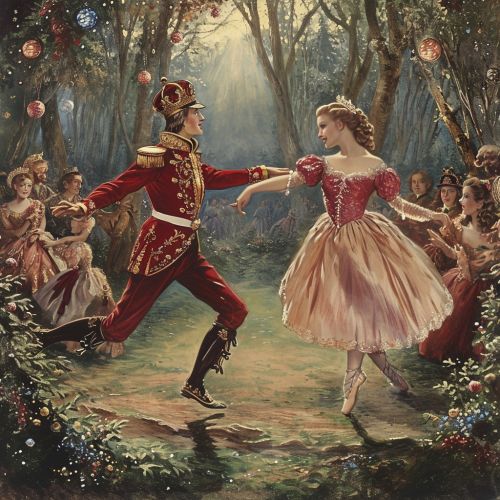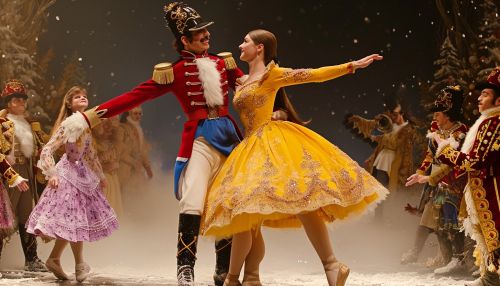The Nutcracker
Origins and History
"The Nutcracker" is a two-act ballet, originally choreographed by Marius Petipa and Lev Ivanov with a score by Pyotr Ilyich Tchaikovsky. The libretto is adapted from E.T.A. Hoffmann's story "The Nutcracker and the Mouse King". The ballet premiered in St. Petersburg on 18 December 1892, on a double-bill with Tchaikovsky's opera, Iolanta.
The original production was not a success, but the 20-minute suite that Tchaikovsky extracted from the ballet was. However, the complete Nutcracker has enjoyed enormous popularity since the late 1960s and is now performed by countless ballet companies, primarily during the Christmas season, especially in North America.


Synopsis
The story of "The Nutcracker" is divided into two acts. The first act is set in the Stahlbaum family home, where they are hosting their annual Christmas party. The family’s children, Clara and Fritz, are celebrating with their friends. The party grows exciting with the arrival of their mysterious Godfather Drosselmeyer, a skilled clock and toy maker. He presents the children with gifts, including a wooden nutcracker for Clara. The party eventually ends, and as the clock strikes midnight, Clara returns to the parlor to check on her beloved nutcracker. As she does, she finds herself in the midst of a battle between an army of gingerbread soldiers and the mice, led by the Mouse King.
The second act is set in the magical Land of Sweets, ruled by the Sugar Plum Fairy. Here, Clara and her Nutcracker Prince are lavishly entertained by her subjects. They are presented with a series of dances: The Spanish Dance, the Arabian Dance, the Russian Dance, the Chinese Dance, the Reed Flutes, and the Flowers. The celebration comes to a climax with the final waltz. Clara then awakes from her dream and finds herself by her Christmas tree with her Nutcracker.
Music
The music of "The Nutcracker" is among Tchaikovsky's most famous and frequently performed works. The music belongs to the Romantic Period and contains some of his most memorable melodies, several of which are frequently used in television and film. They are often heard in TV commercials shown during the Christmas season. The "Trepak", or "Russian dance", is one of the most recognizable pieces in the ballet, along with the famous "Waltz of the Flowers" and "March", as well as the "Dance of the Sugar Plum Fairy".
Legacy and Cultural Impact
"The Nutcracker" has a rich legacy and has had a significant cultural impact since its premiere. It has been performed by numerous ballet companies across the world and has been adapted into several films. It is particularly popular in North America, where annual performances of the ballet have become a Christmas tradition. The ballet has influenced popular culture in many ways and has been referenced in a variety of media.
